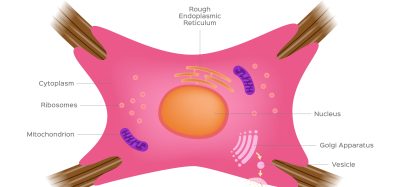When chemistry corrects biology: the deuterated return of a MET inhibitor
Posted: 30 October 2025 | Drug Target Review | No comments yet
A promising MET inhibitor failed in the clinic due to human-specific metabolism. Now its deuterated analogue, DO-2, is showing that a simple isotope swap might overcome the problem.


The MET proto-oncogene encodes a receptor tyrosine kinase located on the surface of cells. Activated by hepatocyte growth factor, it plays an essential role in regulating growth, survival and tissue repair. In cancer, changes in the MET gene such as mutations, amplification or exon 14 skipping can leave the pathway permanently active, driving tumour progression and resistance to treatment. As a result, MET has been a major focus of oncology drug discovery for more than 20 years.
Progress, however, has not been straightforward. Developing selective MET inhibitors has proved difficult, with both toxicity and metabolism-related liabilities limiting candidates. One of the first selective inhibitors to reach clinical testing was JNJ-38877605, but the compound failed when rapid metabolism by the human-specific enzyme aldehyde oxidase 1 (AOX-1) produced insoluble inactive metabolites.
Few people know that story better than Dr Timothy Perera, CEO of DeuterOncology. He spent 12 years at Janssen Pharmaceuticals (now Johnson & Johnson Innovative Medicine), where he was discovery project leader for JNJ-38877605 as well as the FGFR inhibitor erdafitinib (Balversa). Today he heads DeuterOncology, a clinical-stage biotech developing DO-2, the deuterated form of JNJ-38877605 designed to overcome its metabolic limitations.
Deuteration: strengthening fragile bonds
Deuteration is the replacement of a hydrogen atom with deuterium, its heavier isotope. Deuterium forms a stronger bond with carbon than hydrogen, which makes it harder for metabolic enzymes to break. This is known as the kinetic deuterium isotope effect.
Replacing any ‘hotspot’ hydrogen with deuterium reduces metabolic conversion at that site. This can improve the pharmacokinetic or toxicity profile of drugs.
“Replacing any ‘hotspot’ hydrogen with deuterium reduces metabolic conversion at that site. This can improve the pharmacokinetic or toxicity profile of drugs,” says Perera.
The principle has been known for decades, but only recently has it gained traction in drug development. By placing deuterium at positions vulnerable to metabolism, chemists can slow the breakdown of a drug while preserving its activity.
From JNJ-38877605 to DO-2
Applying this concept to JNJ-38877605, Timothy and colleagues created a deuterated version of the compound. The substitution blocked AOX-1 metabolism, overcoming the human-specific liability that had limited clinical exposure.
“The manufacture and testing of this deuterated version (JNJ-55310723 renamed DO-2) led to a new patent application that was granted and this is the basis of the DeuterOncology IP that was licensed from JNJ.”
This re-engineered molecule is now being tested clinically as DO-2. Its development illustrates how isotope substitution can revive compounds that were abandoned due to metabolic liabilities, providing a second chance to address important therapeutic targets.
MET exon 14 skipping in lung cancer
The clinical rationale for targeting MET remains strong. MET exon 14 skipping mutations occur in 3-4 percent of non-small cell lung cancer (NSCLC), representing roughly 50,000 new patients annually. The median age of diagnosis is about 72, meaning that many patients cannot tolerate the standard combination of chemotherapy and immunotherapy.
Approved MET inhibitors exist, but their side effect profiles, particularly the frequent occurrence of peripheral oedema, limit their use in older patients.
“The toxicity profile of the approved MET inhibitors prevents the use of these in many MET exon 14 skip positive elderly patients resulting in an unmet need for a more tolerable and active agent,” Timothy notes.
Understanding peripheral oedema
Peripheral oedema, or swelling caused by fluid build-up in the limbs, has been a recurring problem across MET inhibitors. The mechanism is linked to MET’s normal role in maintaining endothelial cell barrier function. Blocking MET disrupts this barrier, allowing plasma to leak into tissues and cause swelling.
We have shown that maximal (>95 percent) MET inhibition for ~8–10hrs is necessary and sufficient to impact oncogenic ‘addicted’ tumour cells.
Competitor drugs often maintain continuous (24/7) inhibition, which is sufficient to suppress tumour growth but also blocks physiological signalling. Timothy argues that this is unnecessary, because tumour cells are “oncogenically addicted” to MET, whereas normal cells are not.
“We have shown that maximal (>95 percent) MET inhibition for ~8–10hrs is necessary and sufficient to impact oncogenic ‘addicted’ tumour cells,” he explains.
In principle, achieving high but time-limited inhibition could reduce the risk of oedema while still suppressing tumour growth. Clinical data with DO-2 support this hypothesis: oedema has been rare, and only one patient experienced it, associated with unusually high exposure levels.
Early clinical findings
In Phase I testing, DO-2 has demonstrated encouraging safety and efficacy signals. According to Timothy:
“The safety profile of DO-2 is far superior to any of the competitor agents, with only four reversible grade 3 events seen at the highest dose levels.”
The safety profile of DO-2 is far superior to any of the competitor agents, with only four reversible grade 3 events seen at the highest dose levels.
Tumour responses have been observed in patients with MET-driven disease. In a subset of 11 patients whose tumours carried driver mutations predictive of MET response, all experienced tumour shrinkage. Two achieved partial responses, and one patient with pleural effusion saw complete clearance of disease, remaining on therapy for over 21 months without adverse events.
Although early, these findings suggest that carefully engineered exposure profiles can deliver clinical benefit without the common side effects that have hindered MET inhibitors.
Wider applications of deuteration
The implications extend beyond MET. Deuteration is being explored in several therapeutic areas as a way of improving pharmacokinetics, safety and dosing convenience. In oncology, DO-2 provides a case study of how this approach can solve a specific metabolic problem, but similar principles could apply to other kinase inhibitors or drug classes.
Timothy notes that MET amplification also arises as a resistance mechanism in other cancers, including EGFR-driven NSCLC, and that deuterated inhibitors could be valuable in combination regimens.
“The best-in-class safety profile of DO-2, combined with preclinical data showing the lack of significant drug-drug interaction liabilities or P-glycoprotein interaction concerns makes DO-2 an easy combination partner.”
Beyond MET, DeuterOncology is exploring chemistry-led applications of deuteration to other clinically validated scaffolds, with the goal of optimising drugs that might otherwise be limited by metabolism or tolerability.
Educating the field
For drug discovery researchers, DO-2 shows how deuteration can address specific metabolic liabilities that cannot be solved through conventional medicinal chemistry. It is not a general fix, but a tool that can be applied when metabolism limits clinical exposure or tolerability. The key question is identifying when the approach will provide a real advantage over non-deuterated analogues.
The case also highlights the importance of considering human-specific metabolism early in drug discovery. AOX-1 metabolism was not predicted by animal models but emerged only in clinical testing. Identifying such liabilities earlier, and designing isotope-based solutions when appropriate, may save compounds from being prematurely abandoned.
Looking ahead
The future of deuterated drugs will depend on demonstrating clear advantages in clinical practice. For MET inhibitors, the central question is whether intermittent, high-level inhibition can provide durable control of tumours while reducing side effects like oedema. If so, this could broaden access to MET-targeted therapies, especially for elderly patients who currently have few tolerable options.
As Timothy’s experience shows, sometimes a compound’s limitations are not the end of the story but the beginning of a new chapter in drug design.
Meet the expert


Dr Timothy Perera has more than 30 years of global experience in both large and small pharmaceutical companies, spanning target identification, drug discovery and development. Before founding DeuterOncology he was Founder and CSO of OCTIMET Oncology NV. Prior to that he served as Global Discovery Leader for the Lung Disease Area at Johnson & Johnson, and in 2012 was made a Janssen Research Fellow in recognition of his contribution to R&D.
During his career at Janssen he led multiple discovery project teams, including four compounds that reached the clinic. He was Discovery Project Leader and Project Champion for the first globally approved FGFR kinase inhibitor, Balversa (erdafitinib). He is a named inventor on 16 patents and a co-author on more than 40 scientific publications.
Related topics
Analysis, Assays, Cancer research, Clinical Trials, Drug Development, Drug Discovery, Drug Discovery Processes, Enzymes, Kinases, Oncology, Pharmacology
Related conditions
Non-small cell lung cancer (NSCLC)
Related organisations
DeuterOncology
Related people
Dr Timothy Perera (Founder and CEO of DeuterOncology)








